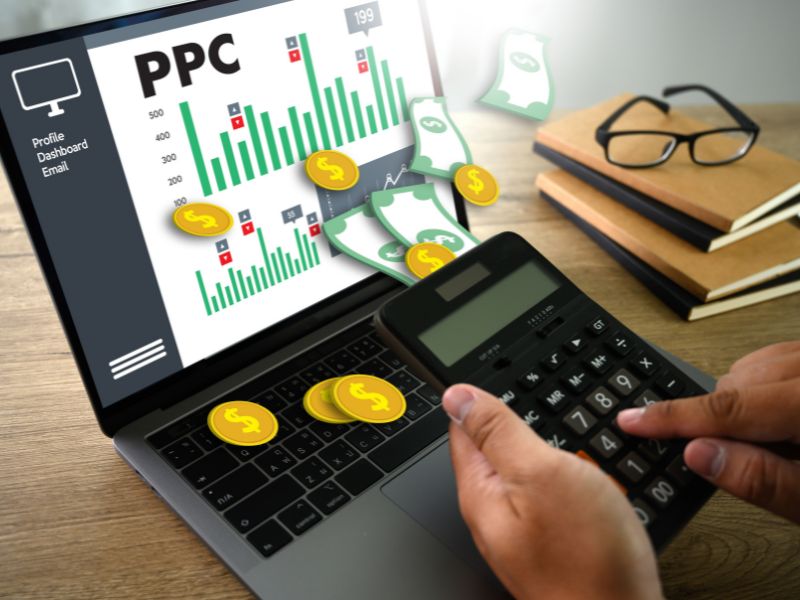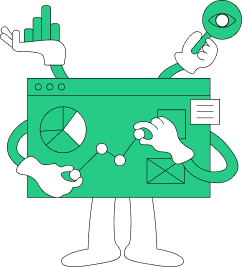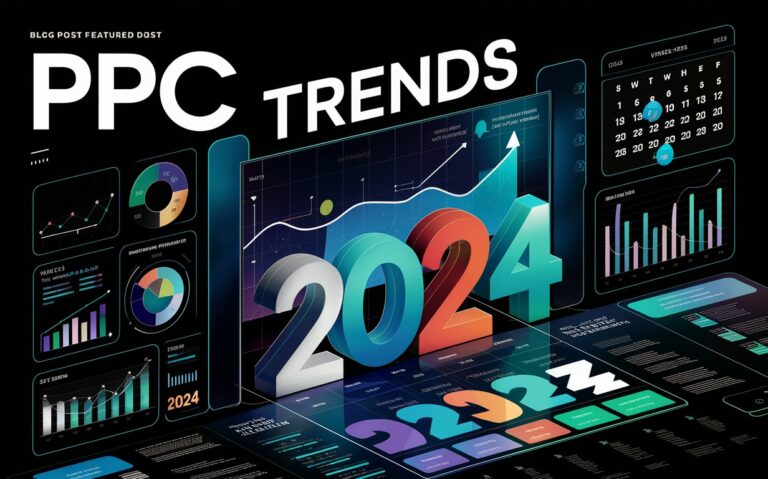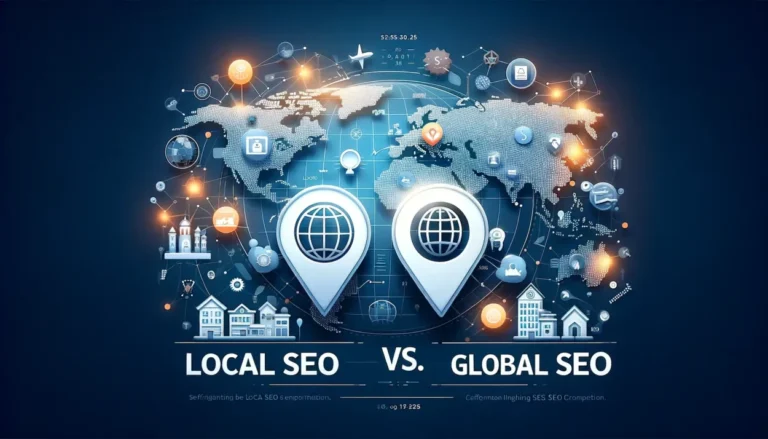In the bustling digital marketplace, the click of a mouse can feel like the ring of a cash register, signaling opportunity and success. At the heart of this online bazaar, a metric known as the conversion rate stands tall, a beacon guiding marketers towards the shores of profitability. It’s not just a number; it’s the pulse of pay-per-click (PPC) campaigns, the rhythmic drumbeat to which every ad copy, keyword, and landing page dances. Understanding this measure is akin to a gardener knowing precisely when to water the plants; it’s the difference between a flourishing garden of returns and a wilting investment.
Imagine a stream of visitors gliding through the digital front doors, their virtual footsteps echoing across web pages. A good conversion rate is the invisible host that warmly greets these guests, enticing them down a path carefully paved with persuasive content and compelling offers. It’s the alchemist that transforms the leaden scroll of the curious into the golden click of the committed. As explorers in this cybernetic world, marketers seek to master the art of this transformation, turning passerby interest into tangible action – the ultimate measure of a PPC campaign’s prowess.
Understanding Conversion Rates in PPC
Conversion rates, the compass guiding the journey of pay-per-click campaigns, reveal the frequency at which clicks blossom into valued actions. Like a gardener rejoicing in the blossoming of seeds, marketers delight in high conversion rates, for they are a testament to the efficacy of their PPC endeavors. Each click, a potential sprout, is nurtured with the goal of flourishing into a conversion rat, the ultimate bloom of digital marketing efforts.
The impact of conversion rates on PPC is akin to the gentle touch of sunlight on petals, essential for growth and vigor.
What is a Conversion Rate?
Imagine a bustling digital marketplace, where every click is a potential customer walking through your virtual door. In this arena, your guidepost to success is understanding conversion rates. So, what is a conversion rate, you ask? Picture conversion rates as the heartbeat of Pay-Per-Click (PPC) advertising, a critical metric that measures the pulse of your campaign’s effectiveness.
A conversion rate in the context of PPC is simply the percentage of users who take a desired action after clicking on your ad. This action could range from making a purchase to signing up for a newsletter or filling out a contact form. It’s the magical moment when a casual browser transforms into a valuable lead or customer.
By keeping a keen eye on conversion rates, businesses can adjust their sails to catch the optimum winds of online marketing success. Whether you’re evaluating the health of current ppc conversion rates or seeking to surpass average conversion rates, understanding this vital sign is essential in the intricate dance of digital advertising.
How Conversion Rates Impact PPC?
As the journey through the realm of PPC continues, a beacon of insight emerges on the horizon: the impact of conversion rates. Imagine a bustling marketplace, where every click is a potential customer, each with their own hopes and intentions. In this digital bazaar, conversion rates act as the heartbeat of PPC campaigns, pulsating with every transaction completed.
Conversion rates are the alchemists of the PPC world, transforming mere clicks into valuable actions. They are the crucial metric that determines the efficiency of an advertisement; a higher conversion rate means that a greater percentage of clickers are taking the desired action, whether it’s making a purchase, signing up for a newsletter, or filling out a contact form.
Elevated conversion rates in PPC campaigns signify a resonating message with the target audience, a well-crafted landing page, and an offer that’s too tantalizing to ignore. They are the architects of success, meticulously constructing the bridge between consumer interest and business revenue.
Deciphering the Average Conversion Rates
As we pivot from the foundations of PPC, let’s delve into the kaleidoscope of numbers that define success—deciphering average conversion rates. Imagine a bustling digital marketplace where every click is a potential customer. In this vibrant scene, conversion rates act as the heartbeat, pumping vitality into advertising campaigns.
Now, consider average conversion rates as the pulse rate of this heartbeat, offering a snapshot of health across different industries. It’s like peering through a kaleidoscope, witnessing patterns and colors shift; average conversion rates vary by sector, campaign, and even ad placement. They are the mosaic that marketers strive to piece together for a clearer image of performance.
Decoding these rates is akin to a gardener understanding the seasons—knowing what to expect can inform strategies for growth. For instance, e-commerce might flaunt one pattern while B2B services display another. As for tips & ideas, one might consider industry benchmarks an essential guide.
Good Conversion Rates: A Closer Look
In the bustling digital marketplace, a good conversion rate stands as a beacon of success, guiding businesses towards profitable shores. As merchants weave through the intricate web of online commerce, understanding what constitutes a good conversion rate becomes crucial. It’s a figure that gleams with the promise of growth and customer engagement, turning lukewarm interest into solid sales.
A good ecommerce conversion rate is often seen as a hallmark of a thriving online store, a testament to strategies that resonate with the heartbeats of consumer desire. But beyond the storefront, the role of landing pages in conversion rates cannot be overstated.
The Importance of Good Conversion Rates
As we peel back the layers of pay-per-click advertising, the core—the heart of the matter—reveals itself to be good conversion rates. These are not just numbers on a screen; they are the vibrant pulses of any successful online marketing campaign. The importance of good conversion rates cannot be overstated, as they are the embodiment of your marketing’s effectiveness, turning the casual browser into an engaged customer.
A good conversion rate is like the North Star for digital marketers, guiding the strategies that lead to prosperous outcomes. It’s a beacon that shines on the most lucrative paths, indicating a meeting of customer interest and campaign resonance. The quest for a good ecommerce conversion rate propels businesses into a realm where each click holds the potential for growth and each interaction is a step toward brand loyalty.
Without a good website conversion rate, an online campaign can quickly become a tale of missed opportunities and dwindling resources. It’s the difference between a garden blooming with customer interactions and a barren digital landscape.
What Constitutes a Good Conversion Rate?
As we peel back the layers of the pay-per-click (PPC) marketing landscape, the concept of a “good conversion rate” shines through as the beacon of success. But what paints the picture of a good conversion rate? It’s not a one-size-fits-all number; rather, it’s a kaleidoscope of industry benchmarks, audience behavior, and campaign objectives that blend together to define what “good” truly means.
In the bustling digital marketplace, a good ecommerce conversion rate might fluctuate dramatically from that of a service-oriented website. Yet, the crux lies in surpassing the unique baseline for your niche. A good conversion rate is akin to a garden thriving in spring, where each click blossoms into an action that aligns with your goals.
For some, a good website conversion rate hovers around the 2-5% mark, but others may aim for higher ground, seeking out the fertile soils that yield rates upwards of 10%.
The Role of Landing Pages in Conversion Rates
As we pivot from the broad understanding of conversion rates in PPC, let’s zoom in on a crucial element that can dramatically enhance these metrics – landing pages. The role of landing pages in conversion rates cannot be overstressed, acting as the digital welcome mat that ushers visitors into the fold of potential customers. Think of landing pages as the charismatic salesperson who greets you with a warm smile and a handshake, leading you down the path to purchase with skill and ease.
A landing page with a stellar design, compelling copy, and a clear call-to-action can skyrocket landing page conversion rates. Imagine a well-orchestrated symphony of visuals and text that resonates with the visitor’s deepest needs and desires, making the act of conversion as natural as a leaf falling onto the soft autumn ground. The pursuit of better landing pages should be relentless, for they are the alchemists turning curious clicks into golden customers.
When good conversion rates are the goal, one must scrutinize every pixel and every word of the landing page.
Enhancing PPC Conversion with Conversion Rate Optimization
Embarking on a journey of enhancing PPC conversion begins with a deep dive into the art of conversion rate optimization (CRO). Picture a garden where each visitor is a potential bloom, and CRO is the attentive gardener ensuring each has the best chance to flower. The significance of conversion rate optimization lies in its ability to transform clicks into a cascade of vibrant conversions.
Enter ad quality score, the compass guiding this journey. A high ad quality score not only improves ad placement but also polishes the path to conversion rate optimization, acting as a beacon for quality traffic.
The Significance of Conversion Rate Optimization
As one delves deeper into the realm of digital marketing, the spotlight inevitably falls upon the transformative practice of conversion rate optimization (CRO). This strategic process is not just a mere tweak or adjustment; it’s an ongoing journey of refinement that propels ordinary campaigns into realms of extraordinary performance. Conversion rate optimization stands as a beacon of efficiency in the bustling sea of online advertising, guiding ads to the shores of success.
At its core, conversion rate optimization is the art and science of amplifying the percentage of visitors who take the desired action on a webpage. This next-level approach to marketing goes beyond surface-level changes; it dives into the psychology of the consumer, crafting enticing offers and an environment that resonates with the target audience’s deepest desires and needs.
By harnessing the power of conversion rate optimization, businesses are not just improving numbers—they’re creating a symphony of user experience where every click and interaction is a note played to perfection.
Ad Quality Score: A Key to Conversion Rate Optimization
As we delve deeper into the realm of conversion rate optimization, it becomes clear that the tapestry of successful online advertising is woven with threads of numerous factors, one of which is the Ad Quality Score. This critical metric acts as a barometer, measuring the relevance and performance of pay-per-click (PPC) advertisements in relation to user queries.
Imagine a bustling digital marketplace where each ad vies for attention; here, a high Ad Quality Score is akin to a shining beacon, guiding potential customers through the clutter, straight to the doorsteps of the products or services they seek. It is a testament to the synergy between keyword relevance, the allure of ad copy, and the seamless user journey from click to conversion.
By embracing a nextlevel approach to conversion rate optimization, marketers unlock the ability to fine-tune their campaigns in real-time. Conversion tracking serves as the compass, directing strategic adjustments that elevate the Ad Quality Score, thus carving paths to more meaningful engagements and, ultimately, heightened conversion success.
Conversion Tracking for Better Optimization
As if turning the page to a new chapter in a guide to digital marketing success, the focus now shifts to meticulously monitoring the outcomes of pay-per-click campaigns. Imagine a gardener attentively observing every new bud; similarly, marketers must examine the granular details of user interactions to flourish in Conversion Rate Optimization.
Every click, every interaction with an advertisement, becomes a valuable data point, akin to a vibrant brushstroke on a canvas. These interactions are meticulously tallied and analyzed, painting a comprehensive picture of where users are engaging most fervently and where they may be slipping away. This is not just mere number-crunching; it is the art of understanding the user’s journey through the digital landscape.
By refining the focus on these interactions, a symphony of adjustments and tweaks can be orchestrated. This leads to a tapestry of improvement opportunities, each one potentially spiraling advertising campaigns towards more meaningful connections and, ultimately, conversions.
Smart PPC Strategies for Better Conversion Rates
Embarking on a journey through the digital marketing landscape, the mastery of Google Ads can be likened to an artisan selecting the perfect tools. The right keyword match type is akin to a finely tuned instrument, crucial for harmonizing with potential customers’ search queries. It’s a gamechanger, ensuring ads appear for the right audience, thus setting the stage for a symphony of clicks and conversions.
As the melody progresses, one cannot overlook the strategic deployment of negative keywords, the unsung heroes within Google Ads. These powerful filters refine campaigns by silencing irrelevant search noise, preventing wasted spend and ensuring that only the most qualified leads are targeted.
The Right Keyword Match Type: A Gamechanger
As we pivot from the multifaceted realm of optimizing conversions, it’s crucial to delve into the strategic linchpin that can significantly tilt the scales of PPC success: the precise selection of keyword match types in Google Ads campaigns. Imagine a maestro conducting an orchestra, where every keyword plays a note, contributing to the symphony of search engine results. Here, the masterful curation of keyword match types becomes the gamechanger, harmonizing the flow of targeted traffic with the advertiser’s intent.
In the bustling marketplace of Google Ads, selecting the optimal match type is akin to finding the proverbial needle in the haystack, yet it is anything but simple. This choice dictates the reach of an ad campaign, with broad match casting a wide net, while exact match hones in with surgical precision, ensuring that only the most relevant queries trigger the ads.
By employing a strategy that balances reach with relevancy, one can effectively sidestep the cacophony of irrelevant clicks.
Leveraging Negative Keywords for PPC Success
While exploring the multifaceted world of PPC, one must not overlook the strategic use of negative keywords—a beacon that guides the right traffic to your digital doorstep. Within the bustling marketplace of Google Ads, negative keywords serve as the unseen gatekeepers, ensuring that only the most relevant queries trigger your advertisements. By meticulously curating a list of negative keywords, one can effectively sidestep the unqualified clicks that gnaw away at marketing budgets, allowing for a more focused approach that targets the audience who is truly interested.
Picture a garden where these negative keywords are the vigilant scarecrows, keeping the pesky, irrelevant searches at bay, thus protecting the precious crop of potential customers. This is not just a matter of subtraction but a strategic move to amplify the visibility of your relevant ad copy among the sea of competitors. Moreover, by analyzing competitors’ top keywords, one can discern which irrelevant terms to add to the negative keyword list, wielding them as a shield against wasted expenditure and ensuring that each click has the potential to blossom into a conversion.
Writing Relevant Ad Copies: The Secret Sauce for High Conversion Rates
Navigating the vibrant digital marketplace, one discovers that the crafting of captivating ad narratives is akin to a master chef seasoning a gourmet dish to perfection. Within the bustling world of Google Ads, where every click is a potential symphony of success, the artistry of composing ad text that resonates with the audience is the secret sauce for high conversion rates.
Imagine stepping into a gallery where each advertisement is a painting, meticulously designed with words that beckon like an inviting path through a serene garden. The choice of language, the cadence of the message, and the harmony of the call-to-action coalesce to form an irresistible lure, drawing potential customers deeper into the brand’s embrace.
To achieve this level of allure, the alchemy of precision and creativity becomes essential. Each ad, a tapestry woven with the golden threads of benefits and solutions, tailored to the unique desires and needs of the searcher. The end result?
Tackling Cart Abandonment for Higher Conversion Rates
In the bustling marketplace of digital commerce, understanding cart abandonment is akin to deciphering an intricate puzzle. Each piece, a clue to why shoppers stray from the checkout path, leaving potential commerce sales in limbo. Unveiling the mystery begins with a cart abandonment strategy tailored to foster organic transactions, transforming fleeting visits into lasting purchases.
The journey to a winning cart abandonment strategy meanders through the science of experimentation. Here, frequent testing becomes the beacon, guiding merchants to the best place where subtle tweaks lead to significant gains.
Understanding Cart Abandonment
While smart PPC strategies pave the path towards the coveted click, the journey to actual sales is often disrupted by the specter of cart abandonment. Vividly imagined as an invisible barrier within the digital marketplace, cart abandonment is that critical juncture where potential customers, teetering on the edge of a purchase, retreat into the ether of the internet, leaving behind a cart full of products.
Understanding cart abandonment requires a foray into the psyche of the online shopper. Visualize a bustling virtual store, where each click whispers the promise of a new find. Amidst this digital bazaar, distractions abound, and a moment’s hesitation can spell the difference between a sale and a deserted cart. It’s here that a well-crafted cart abandonment strategy becomes crucial.
The killer call of an abandoned cart echoes through the digital corridors, beckoning the sales team to dissect the reasons behind this retreat. Could it be the absence of a killer call to action?
Developing a Winning Cart Abandonment Strategy
Just as a well-crafted net ensures that fewer fish slip away, a carefully developed strategy can significantly increase the likelihood of customers completing their purchases. Imagine a digital shopping cart, brimming with potential, yet frequently left abandoned at the virtual checkout line. To weave a net that minimizes these missed opportunities, understanding the art of crafting a winning strategy to tackle cart abandonment is crucial.
The blueprint for success involves several key elements. First, sending a well-timed email reminder, adorned with a touch of personalization, can nudge hesitant shoppers back to their carts. Implementing a countdown timer also injects a sense of urgency, encouraging shoppers to finalize their purchases before time runs out. Additionally, offering a seamless checkout experience, free from unnecessary hurdles, ensures that the path to purchase remains clear and inviting.
Moreover, embracing transparency in pricing and shipping costs dispels any last-minute doubts. With the integration of a cookie consent creator, trust is built, ensuring that customers feel their data is handled with care.
How Frequent Testing Can Help in Reducing Cart Abandonment
As we delve deeper into the labyrinth of e-commerce intricacies, the specter of cart abandonment casts a long shadow over potential profits. Unveiling the magic of iterative experimentation could be the wand-waving act needed to dissipate this persistent haze.
How Frequent Testing Can Help in Reducing Cart Abandonment:
Imagine a kaleidoscope of digital shopping carts, each brimming with products yet often left forlorn at the virtual checkout. The key to transforming these abandoned carts into completed purchases is not just a single spell but a series of enchanting tests, each casting light on hidden customer hesitations. By implementing a cycle of assessment, hypothesis, and evaluation, merchants can identify which elements within their checkout process bewitch or repel customers.
Picture a world where each button, color, and message undergoes scrutiny, akin to alchemists refining their potions. Testing different checkout workflows can reveal a path so seamless that customers glide from selection to purchase with ease.
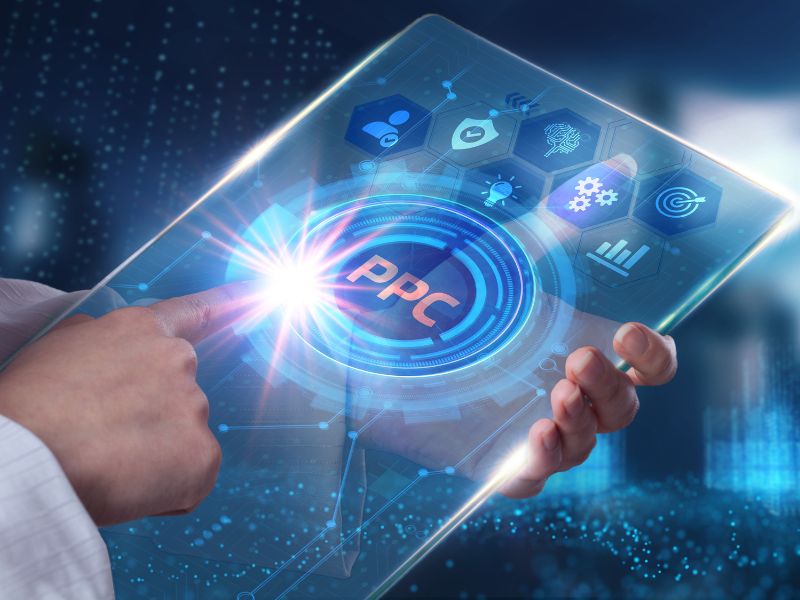
Leveraging Tools for Conversion Rate Boost
In the dynamic landscape of search marketing news, a qr code generator emerges as a pivotal cro tool, seamlessly connecting physical campaigns to digital realms and enhancing PPC conversion pathways. As scanning a QR code unfolds a world of immediate engagement, marketers witness a tangible uptick in marketing ROI increase.
Transitioning to the digital infrastructure, the integration of a revenue acceleration platform becomes paramount. This all-in-one CRM platform marries sales and marketing data, propelling decision-making with predictive analytics. Its role is instrumental in the rapid progression from prospect to loyal customer.
Moreover, the advent of free marketing calculators equips marketers with the power to dissect and optimize campaigns without financial constraints.
The Role of QR Code Generators in PPC Conversion
Just when the challenge of cart abandonment begins to loosen its grip, another beacon of innovation shines a path toward increasing conversions: QR code generators. These nifty little squares are revolutionizing the way potential customers interact with pay-per-click (PPC) campaigns. Imagine walking by a captivating poster, the allure of its message beckoning you closer. Embedded within lies a QR code, a gateway that transports you from the physical world to the digital realm of instant engagement. With a single scan, the journey from curiosity to potential sale is dramatically shortened.
The magic of QR code generators in PPC campaigns lies in their ability to create a seamless bridge. Free tools are flourishing, offering marketers the chance to turn any piece of visual marketing into an interactive experience. QR codes can whisk users directly to a landing page, promotional video, or exclusive content, thereby bypassing the usual distractions that might derail a sale. By integrating these codes with a revenue acceleration platform or an all-in-one CRM platform, the data harvested from scans helps in sharpening the precision of future campaigns.
The Importance of a Revenue Acceleration Platform
Imagine the feeling of a steady, surging stream of revenue flowing into your business, as if a once-trickling creek had been transformed into a mighty river. This is the promise of a robust Revenue Acceleration Platform, a beacon in the night guiding entrepreneurs through the foggy abyss of missed opportunities. By harnessing advanced analytics and actionable insights, this all-in-one CRM platform becomes the linchpin in aligning marketing, sales, and customer success teams. The result? A symphony of business operations that sings to the tune of accelerated growth and nourished profit margins.
A Revenue Acceleration Platform unlocks the door to a treasure trove of data, merging the finesse of intuitive forecasting with the precision of performance metrics. Imagine an ecosystem where every click, conversation, and conversion feeds into a database that smartly nudges your strategy towards areas ripe for uplift. With free tools like a free marketing calculator at one’s fingertips, the leap from data to dollars becomes not just possible, but practically palpable.
Free Marketing Calculator: A Must-Have for Every Marketer
Imagine stepping into a world where the complexities of marketing budgets transform into a symphony of clear, actionable insights. It’s within this realm that the Free Marketing Calculator emerges as a beacon of clarity for marketers navigating the seas of campaign investments and returns.
This invaluable gadget serves as a compass, guiding through the tumultuous waves of marketing strategies with the precision of a seasoned captain. With just a few clicks, the landscapes of cost-per-acquisition, marketing budget allocation, and forecasted revenue are painted in vivid hues, allowing for decisions to be made not in the dark, but in the radiance of data-driven enlightenment.
In the hands of a marketer, this free tool becomes a trusted sidekick, revealing the secrets to optimizing spend and maximizing impact. The beauty of this lies not just in its cost-effectiveness but in its power to harmonize with an all-in-one CRM platform, creating an ensemble that sings in perfect harmony to the tune of success.
A Dive into Industry Averages and Key Takeaways
Delving into the tapestry of industry averages offers a glimpse into the collective pulse of market norms, while key takeaways from PPC conversion rates illuminate the path to digital success. Yet, it’s crucial to understand that conventional wisdom isn’t sacrosanct. Like a kaleidoscope, industry averages shift with trends and time, painting a dynamic landscape for businesses to navigate.
Key takeaways gleaned from PPC endeavors, endorsed by marketing mavens like Larry Kim, often highlight the efficacy of live chat in engaging with prospects along the purchase funnel. These insights suggest that integrating live chat can be a transformative touchpoint, fostering immediacy and personalization.
Understanding Industry Averages
Building upon the arsenal of strategies that bolster conversion rates, it becomes essential to weave through the tapestry of industry benchmarks to fully appreciate the landscape. Understanding what is commonly accepted as normative performance can illuminate the path to surpassing mere adequacy.
Within this vibrant panorama, the notion of industry averages serves as a beacon for businesses navigating the ever-shifting tides of pay-per-click (PPC) advertising. These averages offer a glimpse into the collective efficacy of strategies deployed across different sectors, and they serve as a yardstick against which individual performance can be measured. However, conventional wisdom suggests that these figures are more than mere numbers—they are a narrative that tells the tale of consumer behavior and market trends.
Key takeaways from delving into these benchmarks include recognizing the ebbs and flows of engagement across various industries. For instance, Larry Kim, a luminary in the realm of PPC, often emphasizes the importance of understanding sector-specific performance to tailor strategies effectively.
Key Takeaways for PPC Conversion Rates
Pivoting from the myriad of tools that can enhance conversion potentials, a closer look at the distilled wisdom from pay-per-click (PPC) campaigns emerges. Unlocking the key takeaways for PPC conversion rates is akin to unearthing hidden treasures in the digital marketing landscape.
Foremost, the wisdom of Larry Kim suggests that optimizing for high intent keywords can lead to a meteoric rise in conversion efficiency. Vividly imagine a garden blooming with the most sought-after flowers—the high intent keywords are these blossoms, attracting the most industrious of bees, the potential customers.
Moreover, integrating live chat options has been shown to create a tapestry of trust and real-time engagement. Visitors are greeted with a welcoming presence, a beacon of assistance in the vast ocean of the internet, which can significantly increase the likelihood of conversions.
Yet, it’s important to remember that conventional wisdom isn’t infallible. Larry Kim also emphasizes the power of whimsical, memorable ads over dry, formulaic ones.
Why Should You Not Always Follow Conventional Wisdom?
As we navigate from the practical applications of tools to enhance conversion rates, let’s delve into the undercurrents of wisdom that often guide such strategies. Imagine a vast ocean where each current represents a widely accepted industry practice; it’s tempting to follow these flows that promise familiar shores. However, when considering the adoption of practices such as live chat, it becomes evident that blindly following the tide of common belief may not always lead to the treasure trove of conversions.
Envision a kaleidoscope of businesses, each with unique patterns of customer interaction. The seamless integration of a live chat feature may sparkle with increased conversions for some, yet for others, it might cloud the waters with unnecessary complexity. This begs the question, why should the siren call of conventional practice dictate the course when the winds of innovation could propel you toward uncharted success?
In this vast sea of opportunity, charting a course that acknowledges the wisdom of the crowd, yet remains open to the whispers of originality, could reveal hidden depths of potential within your business strategy.
Final Thoughts on PPC Conversion Rates
In the dance of digits that is PPC, a recapitulation reveals the heartbeat of conversion rates, pulsing with potential. Ingenious methods unfurl like a magician’s cloak, revealing genius ways to enhance these crucial metrics, each trick more dazzling than the last. Amidst this spectacle, the assurance of a moneyback guarantee shines like a beacon, promising safety and trust to wary clickers. For those thirsting for more knowledge, related articles and resources stand as a treasure trove, ready to quench the curiosity and guide towards mastery of the PPC realms.
Recap of PPC Conversion Rates
As the curtain draws to a close on our exploration of the labyrinthine world of PPC, let’s take a moment to immerse ourselves once again in the kaleidoscope of PPC conversion rates. Picture an orchard where each fruit represents a potential customer click, and the ripest ones are those transformed into actual sales. A bountiful harvest is not a mere stroke of luck but the result of meticulous cultivation – a parallel to the meticulous strategies employed to enhance PPC conversion rates.
Casting our minds back, we recall the vibrant tapestry of figures and facts that depict the landscape of PPC conversion rates. This intricate mosaic is comprised of clicks transforming into customers, each one adding a stroke of color to the overall picture. To navigate this terrain, marketers have at their disposal a compass of related resources, guiding them through the dense underbrush of data towards the clearings of increased conversions.
As we stand on this vantage point, looking over the terrain we’ve traversed, it becomes clear that the journey of optimizing PPC conversion rates is continuous.
Genius Ways to Improve Conversion Rates
As we leave the harbor of industry benchmarks behind, let’s set sail into the creative expanse of enhancing conversion efficacy. Picture a masterfully crafted puzzle—each piece a tactic ingeniously designed to seamlessly fit into your pay-per-click campaigns, elevating the click-to-customer journey beyond the mundane.
In the realm of pay-per-click, a dash of creativity can be the catalyst that transforms browsing into buying. Consider the alchemy of A/B testing; a methodical experimentation where twin ads duel for supremacy, revealing the champion through higher engagement and clicks. Envision tailoring the user’s path with smart, captivating landing experiences that resonate on a personal level, not merely a digital one. Imagine harnessing the subtle art of retargeting, sending a whisper of reminder to those who left without a purchase, wooing them back with customized messages that feel like a serenade rather than a shout.
The Importance of a Moneyback Guarantee in PPC Conversion Rates
In the tapestry of digital advertising strategies, the hues of assurance and trust are woven deeply through the assurance of a satisfaction guarantee. When potential customers click through a pay-per-click (PPC) advertisement, they embark on a journey fraught with decisions. Amidst this journey, the promise of a refund can be a beacon of trust, a commitment from the seller that whispers of confidence in the product offered.
Imagine the tranquility of a customer’s mind when they know their investment is safeguarded by a refund promise. Such peace of mind can be the deciding factor between hesitation and conversion. It’s a vibrant display of confidence that not only elevates the perceived value of the offer but also paints the brand in a generous and customer-centric light.
Implementing a satisfaction guarantee can transform the landscape of PPC conversion landscapes. It’s like a warm, inviting glow that guides customers through the night of uncertainty, leading directly to the dawn of a confident purchase decision.
Conclusion
In conclusion, navigating the waters of pay-per-click advertising is akin to captaining a ship through a dynamic seascape, where a robust conversion rate acts as the North Star, guiding marketers towards the treasure trove of business growth. The alchemy of successful campaigns involves a mix of sagacious strategy and creative experimentation. By understanding the nuances of what constitutes a strong conversion rate and implementing ingenious techniques to bolster it, businesses can sail towards the horizon of success with their banners flying high.
The art of PPC is ever-evolving, with new tools and approaches emerging like stars in a marketer’s sky. Embracing these innovations can illuminate the path to enhanced performance. As the digital marketplace thrives, those who adapt and refine their approach, keeping a keen eye on purchase completion rates and utilizing strategic instruments, will be the ones who bask in the glow of achievement and set the bar for others to follow in the enchanting world of online advertising.

